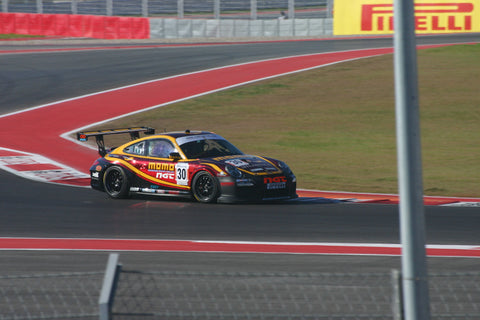Nine Habits on the Street for Better Lap Times September 01 2013
Even if you spend every weekend at the track, odds are that you spend more time driving on the streets than you do on the track. So when you are driving on the streets, it only makes sense to build habits that will help you at the track. Here is a list of habits to build on the road so that you can be faster at the track.
1. Look as far down the road as you can. On the track, by looking and thinking ahead through the next two corners, your lines will naturally flow together better. Additionally, it will allow you to see hazards as early as possible both on the street and the track.
2. Be precise with the placement of your car. If you regularly drive your car with precision on the street, you are set up better to precisely clip the apex curbing at the track. On the street do you stay in the exact center of your lane? Keep in mind that this precision should be accomplished using your peripheral vision. You still need to be focusing further forward.
3. Exercise proper driving position. Most professional drivers have their seat fairly upright and their hands at 9 o'clock and 3 o'clock. Are you going to drive at the track with your seat leaned back and your left hand at 1 o'clock? Get your mind and body used to the driving position you'll be using at the track.
4. Heel-and-toe your downshifts. If you have a manual transmission, downshift on the street similar to how you would on the track. Obviously a rev-matching throttle blip is unnecessary when doing a lazy 3rd to 2nd downshift at parking lot speeds, but practice the technique whenever it makes sense to. The more muscle memory you develop, the easier it will be at the track.
5. Check your gauges. The pros usually take a quick glance down at their gauges on the straights. Keeping tabs on the health of your car at the track can save you and your car. Likewise, on the street, you can establish the habit of glancing down at your gauges a couple of times every minute. On the street, cars are so reliable nowadays, and warning lights rarely come on, but this is a good habit can save your bacon at the track.
6. Check your mirrors frequently. On the track, you need to keep tabs on who is coming up behind you and what they are doing. You may need to adjust your line to give them more room and let them by, or you may choose to drive a more defensive line. Situational awareness is good to have for both the track and the street.
7. Read other drivers and predict their moves. How is the fast car ahead going to respond to the slow car in front of it? Is the faster car going to collide with the merging traffic as he changes lanes to go around? Predicting accidents can help you react faster and better on the street and the track.
8. Wear your track day armor whenever possible. Driving with a closed face helmet is a different experience. You may have to tilt your head down to view your gauges and the face shield distorts your vision a bit. You can't hear as well, and your peripheral vision may be limited slightly. If you are used to wearing a helmet on the streets, you will feel that much more at home on the track. Pay attention to any local laws that may prohibit the use of helmets on public roads.
9. Drive the racing line on the streets. Do you clip apexes and use the full runout in corners? Obviously there are times where this is a bad idea, like when using the full runout puts you right up against oncoming traffic. I'm not advocating attacking the corners at 10/10ths, but rather practicing seeing the best line and placing your car with precision where you want it to be at legal velocities.




